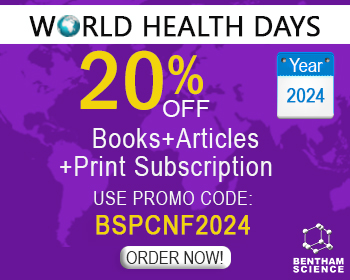Abstract
Colitis-associated colorectal cancer (CAC) remains a critical complication of ulcerative colitis (UC) with a mortality of approximately 15%, which makes early CAC diagnosis crucial. The current standard of surveillance, with repetitive colonoscopies and histological testing of biopsied mucosa samples, is burdensome and expensive, and therefore less invasive methods and reliable biomarkers are needed. Significant progress has been made, thanks to continuous extensive research in this field, however, no clinically relevant biomarker has been established so far. This review of the current literature presents the genetic and molecular differences between CAC and sporadic colorectal cancer and covers progress made in the early detection of CAC carcinogenesis. It focuses on biomarkers under development, which can easily be tested in samples of body fluids or breath and, once made clinically available, will help to differentiate between progressors (UC patients who will develop dysplasia) from non-progressors and enable early intervention to decrease the risk of cancer development.
Keywords: Inflammatory bowel disease, ulcerative colitis, Crohn’s disease, colitis-associated colorectal cancer, colorectal cancer, surveillance, biomarkers.
[http://dx.doi.org/10.3322/caac.21492] [PMID: 30207593]
[http://dx.doi.org/10.1002/cncr.24760] [PMID: 19998273]
[http://dx.doi.org/10.1055/s-0029-1242458] [PMID: 21037809]
[http://dx.doi.org/10.1016/j.crohns.2013.04.008] [PMID: 23664897]
[http://dx.doi.org/10.1002/ibd21365]
[http://dx.doi.org/10.1097/MEG.0000000000000576] [PMID: 26938805]
[http://dx.doi.org/10.1136/gutjnl-2012-302311] [PMID: 22717453]
[http://dx.doi.org/10.1002/ibd.22839] [PMID: 22162423]
[http://dx.doi.org/10.1093/ecco-jcc/jjw168]
[http://dx.doi.org/10.1038/nrgastro.2015.34] [PMID: 25732745]
[http://dx.doi.org/10.1053/j.gastro.2011.01.055] [PMID: 21530745]
[http://dx.doi.org/10.1111/j.1572-0241.2006.00603.x]
[http://dx.doi.org/10.1053/j.gastro.2011.10.001] [PMID: 22001864]
[http://dx.doi.org/10.1136/gut.39.5.690] [PMID: 9014768]
[http://dx.doi.org/10.1016/S0140-6736(17)32448-0] [PMID: 29050646]
[http://dx.doi.org/10.1038/ajg.2015.233]
[http://dx.doi.org/10.1136/gutjnl-2012-303959]
[http://dx.doi.org/10.1002/ibd.21815] [PMID: 21793126]
[http://dx.doi.org/10.1111/codi.13371] [PMID: 27153478]
[http://dx.doi.org/10.1111/apt.12651] [PMID: 24612141]
[http://dx.doi.org/10.1056/NEJM199011013231802] [PMID: 2215606]
[PMID: 27069120]
[http://dx.doi.org/10.3109/00365521.2014.978817] [PMID: 25862314]
[http://dx.doi.org/10.3748/wjg.v21.i6.1749] [PMID: 25684939]
[http://dx.doi.org/10.1038/onc.2014.442] [PMID: 25659581]
[http://dx.doi.org/10.3389/fimmu.2018.00087] [PMID: 29441068]
[http://dx.doi.org/10.1159/000365309] [PMID: 26674110]
[http://dx.doi.org/10.1056/NEJMra1403718] [PMID: 25853748]
[http://dx.doi.org/10.3748/wjg.v20.i12.3164]
[http://dx.doi.org/10.3390/ijms18061284] [PMID: 28621756]
[http://dx.doi.org/10.1186/s12957-018-1428-0] [PMID: 29966533]
[http://dx.doi.org/10.1053/j.gastro.2015.12.036] [PMID: 26764183]
[http://dx.doi.org/10.1053/j.gastro.2016.02.062] [PMID: 26924087]
[http://dx.doi.org/10.1053/j.gastro.2016.04.001] [PMID: 27063727]
[http://dx.doi.org/10.1016/j.bpg.2013.03.014]
[http://dx.doi.org/10.1016/j.bpg.2013.03.009] [PMID: 23809238]
[http://dx.doi.org/10.1016/j.dld.2016.12.011] [PMID: 28089111]
[http://dx.doi.org/10.1038/ng1089] [PMID: 12610534]
[http://dx.doi.org/10.2217/epi-2017-0025] [PMID: 28621161]
[http://dx.doi.org/10.1007/s00432-015-1972-8] [PMID: 25902909]
[http://dx.doi.org/10.1016/j.jss.2018.05.085] [PMID: 30278948]
[http://dx.doi.org/10.3748/wjg.v21.i43.12274] [PMID: 26604636]
[http://dx.doi.org/10.1053/j.gastro.2008.07.068] [PMID: 18835392]
[http://dx.doi.org/10.3892/or.2018.6566] [PMID: 30015944]
[http://dx.doi.org/10.1371/journal.pone.0173664] [PMID: 28288169]
[http://dx.doi.org/10.1038/onc.2016.468] [PMID: 27991929]
[http://dx.doi.org/10.1053/j.gastro.2017.08.037] [PMID: 28847750]
[http://dx.doi.org/10.1053/j.gastro.2011.01.057] [PMID: 21530747]
[http://dx.doi.org/10.1152/ajpgi.00079.2004] [PMID: 15194558]
[http://dx.doi.org/10.1002/ijc.28346] [PMID: 23797639]
[http://dx.doi.org/10.1016/S1542-3565(05)00738-X] [PMID: 16234048]
[http://dx.doi.org/10.1046/j.1365-2036.18.s2.3.x] [PMID: 12950416]
[http://dx.doi.org/10.1007/s11888-017-0373-6] [PMID: 29129972]
[http://dx.doi.org/10.1016/j.immuni.2004.07.020] [PMID: 15485627]
[http://dx.doi.org/10.1136/gut.2005.079343] [PMID: 16682432]
[http://dx.doi.org/10.1016/j.ccr.2009.01.001] [PMID: 19185845]
[http://dx.doi.org/10.1136/gut.2009.184176] [PMID: 19926618]
[http://dx.doi.org/10.4049/jimmunol.0801217] [PMID: 20042582]
[http://dx.doi.org/10.1016/S0002-9440(10)64587-7] [PMID: 10980113]
[http://dx.doi.org/10.1097/MIB.0000000000000789] [PMID: 27135485]
[http://dx.doi.org/10.1007/s10620-018-5126-0] [PMID: 29796912]
[http://dx.doi.org/10.1016/j.clinre.2015.11.007] [PMID: 26775891]
[http://dx.doi.org/10.1007/s00535-017-1387-1] [PMID: 28884228]
[http://dx.doi.org/10.1093/carcin/bgx032] [PMID: 28383667]
[http://dx.doi.org/10.1016/j.celrep.2016.02.064] [PMID: 26971998]
[http://dx.doi.org/10.1111/cei.12617] [PMID: 25943872]
[http://dx.doi.org/10.3748/wjg.v22.i3.933] [PMID: 26811638]
[http://dx.doi.org/10.1128/mSphere.00587-18] [PMID: 30429227]
[http://dx.doi.org/10.1146/annurev-micro-102215-095513.Gut]
[http://dx.doi.org/10.1111/apt.14384] [PMID: 29034981]
[http://dx.doi.org/10.1007/s12328-017-0813-5] [PMID: 29285689]
[http://dx.doi.org/10.1016/j.ccell.2018.03.004] [PMID: 29657127]
[http://dx.doi.org/10.1136/gut.2009.179804] [PMID: 20427401]
[http://dx.doi.org/10.1053/j.gastro.2009.12.037] [PMID: 20141808]
[http://dx.doi.org/10.1016/j.cgh.2014.07.018] [PMID: 25041865]
[http://dx.doi.org/10.3748/wjg.v22.i35.7882] [PMID: 27672285]
[http://dx.doi.org/10.3748/wjg.14.378] [PMID: 18200660]
[http://dx.doi.org/10.1002/ibd.20766] [PMID: 18942763]
[http://dx.doi.org/10.1016/S1590-8658(11)60585-9] [PMID: 21459335]
[http://dx.doi.org/10.1111/codi.12667] [PMID: 24836541]
[http://dx.doi.org/10.1016/j.crohns.2013.06.001] [PMID: 23870728]
[http://dx.doi.org/10.2147/JIR.S116088] [PMID: 28652796]
[http://dx.doi.org/10.1097/SLA.0b013e31828e7417] [PMID: 23579580]
[http://dx.doi.org/10.1038/ajg.2016.441] [PMID: 27670602]
[http://dx.doi.org/10.3748/wjg.v24.i36.4119] [PMID: 30271078]
[http://dx.doi.org/10.18632/oncotarget.26032] [PMID: 30237858]
[http://dx.doi.org/10.1093/ibd/izy119] [PMID: 29762666]
[http://dx.doi.org/10.1136/gutjnl-2015-310255] [PMID: 28389570]
[http://dx.doi.org/10.1111/apt.12218] [PMID: 23347191]
[http://dx.doi.org/10.1158/1055-9965.EPI-10-0027] [PMID: 20551304]
[http://dx.doi.org/10.1158/1940-6207.CAPR-10-0036] [PMID: 20959518]
[http://dx.doi.org/10.1136/gut.2011.239236] [PMID: 21930727]
[PMID: 19996134]
[http://dx.doi.org/10.1186/s12957-015-0446-4] [PMID: 25888768]
[http://dx.doi.org/10.1002/(SICI)1097-0142(19960701)78:1<48:AID-CNCR9>3.0.CO;2-D] [PMID: 8646726]
[http://dx.doi.org/10.1097/MIB.0000000000000795] [PMID: 27104828]
[http://dx.doi.org/10.1128/mBio.00692-13] [PMID: 24194538]
[PMID: 28143990]
[http://dx.doi.org/10.1158/1078-0432.CCR-16-1599] [PMID: 27697996]
[http://dx.doi.org/10.1158/1940-6207.CAPR-14-0129] [PMID: 25104642]
[http://dx.doi.org/10.3109/1354750X.2015.1068860] [PMID: 26329524]
[http://dx.doi.org/10.1073/pnas.1712625115] [PMID: 29339485]
[http://dx.doi.org/10.1159/000441665] [PMID: 26788915]
[http://dx.doi.org/10.3390/s17081795] [PMID: 28777343]
[http://dx.doi.org/10.1002/ibd.20112] [PMID: 17285596]
[http://dx.doi.org/10.1016/S0140-6736(15)60393-2] [PMID: 26312900]
[http://dx.doi.org/10.1097/MIB.0000000000000453] [PMID: 26083618]
[http://dx.doi.org/10.1016/j.cgh.2013.12.030] [PMID: 24407106]
[http://dx.doi.org/10.1097/MIB.0000000000000587]




























